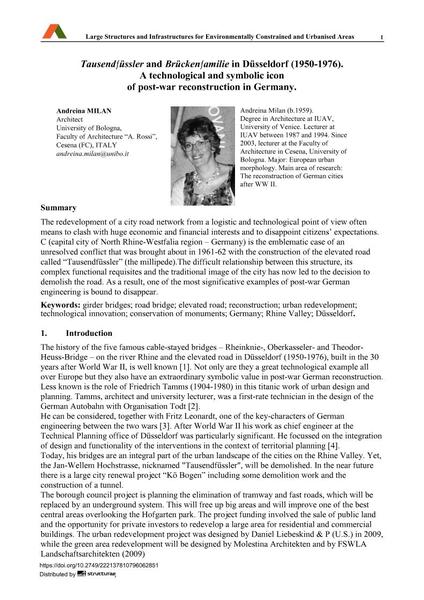Tausendfüssler and Brückenfamilie in Düsseldorf, (1950-1976)
A technological and Symbolic Icon of the Post-War Reconstruction in Germany

|
|
|||||||||||
Bibliografische Angaben
| Autor(en): |
Andreina Milan
|
||||
|---|---|---|---|---|---|
| Medium: | Tagungsbeitrag | ||||
| Sprache(n): | Englisch | ||||
| Tagung: | IABSE Symposium: Large Structures and Infrastructures for Environmentally Constrained and Urbanised Areas, Venice, Italy, 22-24 September 2010 | ||||
| Veröffentlicht in: | IABSE Symposium Venice 2010 | ||||
|
|||||
| Seite(n): | 576-577 | ||||
| Anzahl der Seiten (im PDF): | 4 | ||||
| Jahr: | 2010 | ||||
| DOI: | 10.2749/222137810796062851 | ||||
| Abstrakt: |
The redevelopment of a city road network from a logistic and technological point of view often means to clash with huge economic and financial interests and to disappoint citizens’ expectations. C (capital city of North Rhine-Westfalia region – Germany) is the emblematic case of an unresolved conflict that was brought about in 1961-62 with the construction of the elevated road called “Tausendfüssler” (the millipede).The difficult relationship between this structure, its complex functional requisites and the traditional image of the city has now led to the decision to demolish the road. As a result, one of the most significative examples of post-war German engineering is bound to disappear. |
||||
| Stichwörter: |
Strassenbrücke Rekonstruktion Düsseldorf Deutschland
|
||||
